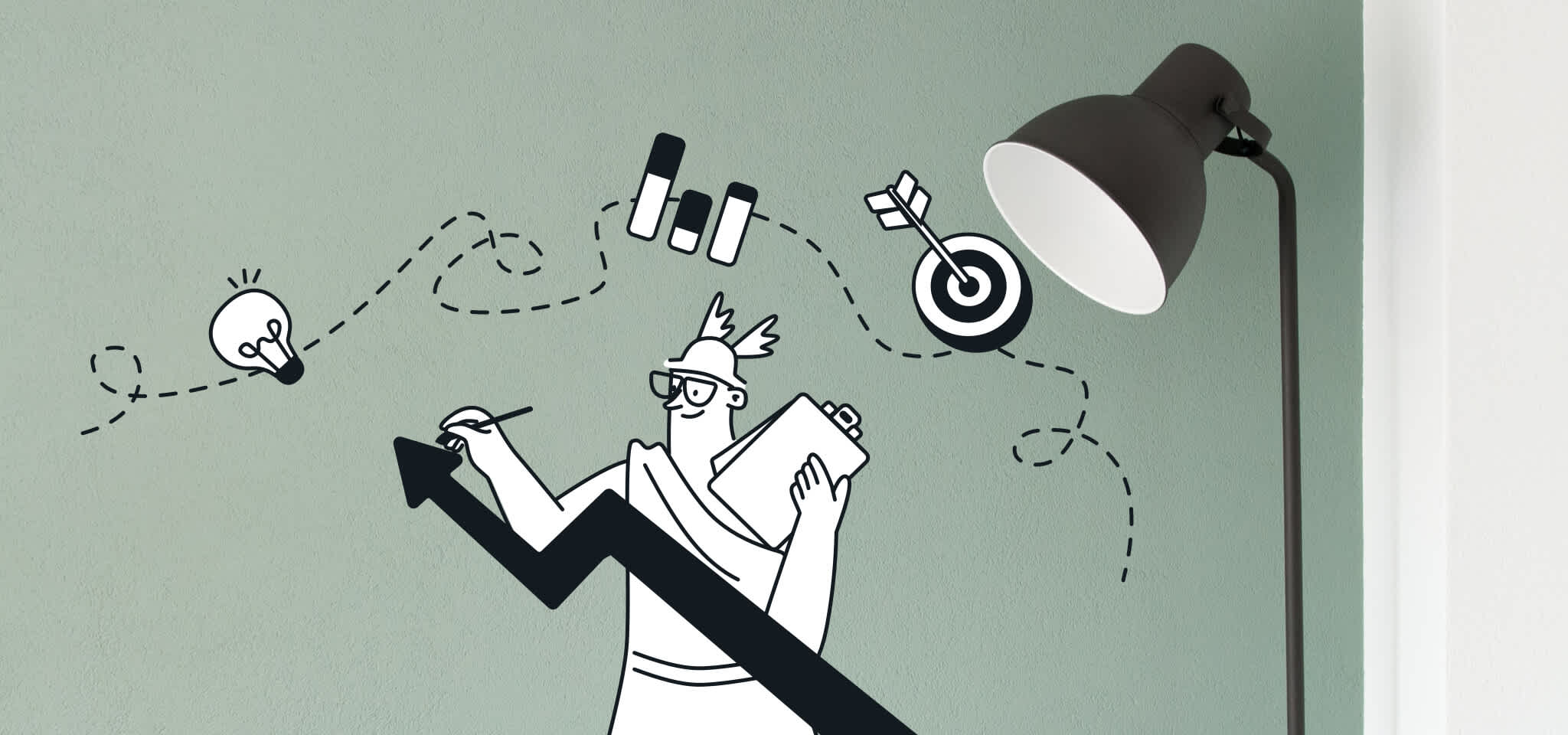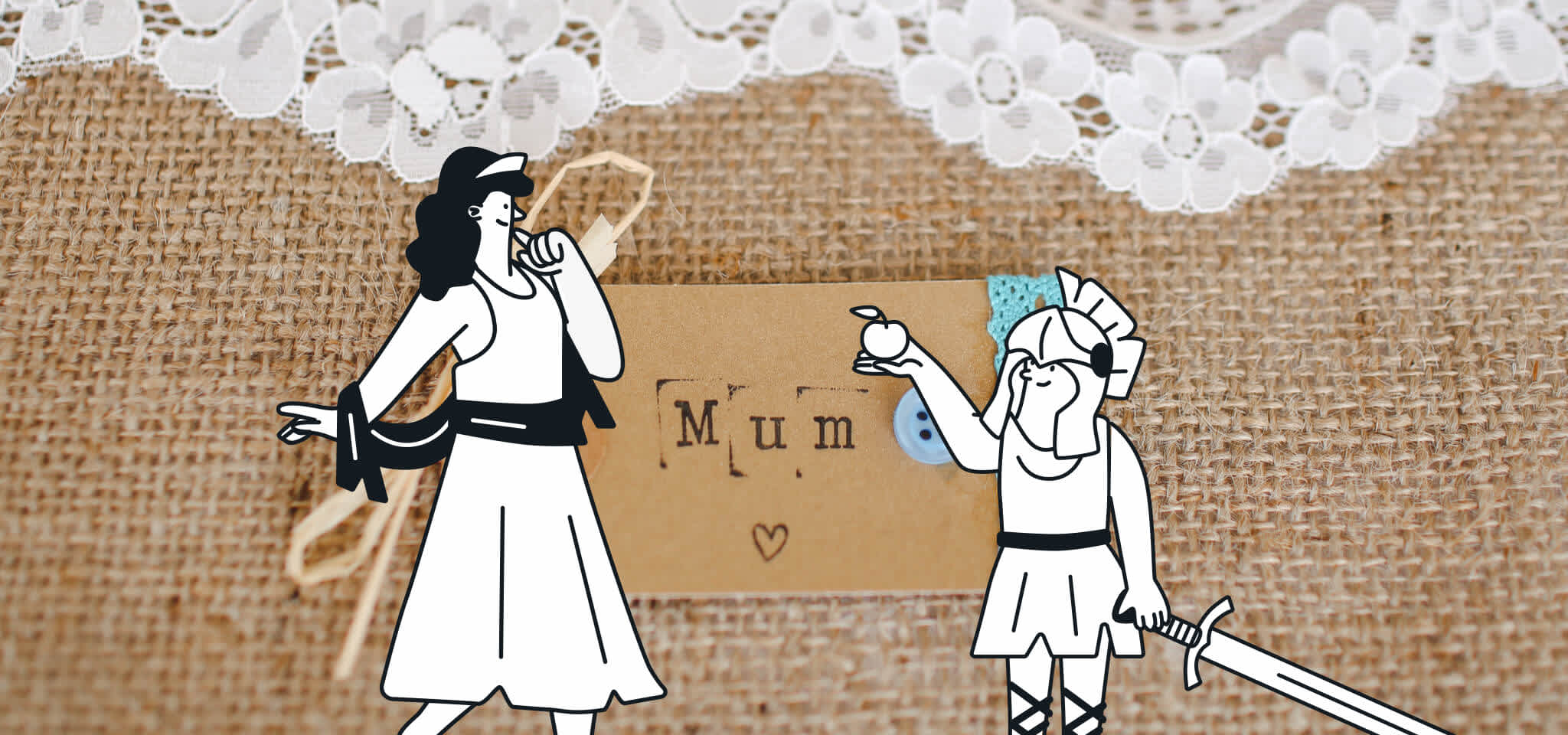Email best practices
The importance of lifecycle email marketing campaigns
Understanding the customer lifecycle makes you a better email marketer, and a strong email strategy is a must-have in lifecycle marketing. Find out how to integrate the two practices and take full advantage of them.
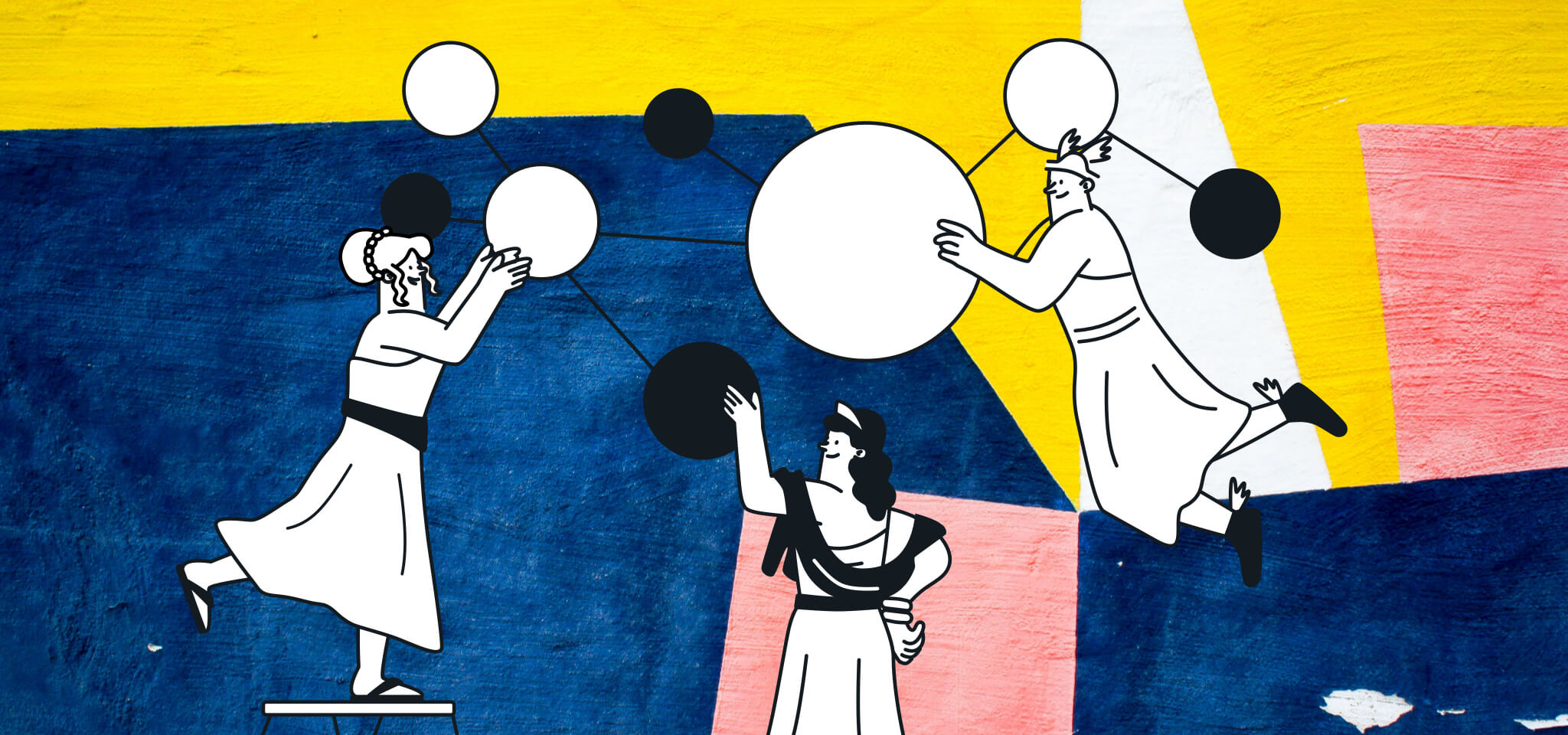
PUBLISHED ON
Just imagine what it would be like if they made a version of Disney’s “The Lion King” for digital marketers. Instead of “The Circle of Life,” there would be a hit song called “The Lifecycle of the Customer.”
Okay, it’s not as catchy or profound, we admit. But Elton John could make anything sound good.
Lifecycle marketing is a powerful and effective way to build a marketing strategy. It puts the needs and expectations of prospects and customers at the center of everything that a brand says and does.
Lifecycle email marketing campaigns are a pillar of this approach because they give you the ability to reach people with tailored messages at specific points along the customer journey.
To help us learn more about lifecycle marketing and the importance of strategic email communication, we talked to Chelsea Mellonas. She’s the Sr. Manager of Lifecycle Marketing here at Sinch Mailjet and she actually started her career as an email marketer.
Table of contents
Acquiring customers vs keeping customers
1. Welcome emails
2. Onboarding and activation emails
4. Reactivation emails
5. Upsell emails
6. Renewal emails
7. Referral program emails
8. Retention/win-back emails
What is lifecycle marketing?
Every customer journey is unique. There are different needs and problems, various solutions and outcomes, as well as many touchpoints along the way. Lifecycle marketing aims to find the right mix of channels, strategies, and tactics...all perfectly timed so that brands can communicate effectively.
Here’s how Chelsea describes lifecycle marketing in her own words:

“Lifecycle marketing involves focusing on marketing across the entire customer journey, from acquisition all the way to advocacy. It’s about understanding where your customers are in the journey, when is the right time, and what is the right message.”
Chelsea Mellonas, Sr. Manager of Lifecycle Marketing, Sinch Mailjet
If you’re an email marketer – the “right message, right time” mantra should sound very familiar.
Lifecycle marketing is all about knowing when it’s time to attract customers, when it’s time to educate them, when it’s time to sell, and when it’s time to recommend something new.
In order to do that effectively, Chelsea says you need to build an experience around the target audience and the customer journey.
“You’re really looking at customer behavior. And a lot of that is research into different customer personas, including what they’re doing, how they’re using the product, and what problem they are trying to solve. To get started, you need to figure out what you know about your customer now and then look for the gaps in the journey that represent quick wins. Where could you make improvements and have the most impact?”
Chelsea Mellonas, Sr. Manager of Lifecycle Marketing, Sinch Mailjet
Lifecycle marketing stages and the customer journey
Personas and customer journey maps are essential tools in lifecycle marketing. A customer/buyer persona tells a story about who you’re trying to reach. The customer journey tells a story about how a prospect goes from being unfamiliar with your brand to a loyal customer who is also a brand advocate.
While the steps in a customer journey vary slightly depending on the source, they tend to progress in similar ways:
Awareness: A prospect realizes they have a specific need and becomes aware of your brand.
Conversion: The prospect takes an action like signing up for a trial, asking for a demo, downloading content, or subscribing to emails.
Purchase: After conducting research and comparing other options, the prospect makes a decision and becomes a paying customer.
Activation: The customer goes through onboarding, learns to use the product, and incorporates it into their daily lives.
Renewal: The satisfied customer comes back for more. They make a repeat purchase, renew a subscription, or act on an upsell offer.
Advocacy: The customer leaves a glowing testimonial, refers the brand to others, and publicly praises the product on social media.
While every step in the customer journey is important, Chelsea explains that having a good grasp on the prospect’s mindset at the start of the customer lifecycle helps marketers create a cohesive strategy.
“You have to look at it across the board. What was the message they engaged with? What was the problem they were looking to solve? If you can understand how you brought a customer in, that can lead the journey all the way through. Then you increase the chances of keeping them as an active customer and earn the right to cross-sell and upsell additional products, because you know what got them in the door in the first place.”
Chelsea Mellonas, Sr. Manager of Lifecycle Marketing, Sinch Mailjet

Outside the steps in the customer journey are the stages of the customer lifecycle. Just like in nature, these stages tend to happen in threes. A caterpillar emerges from an egg, forms a chrysalis, and transforms into a beautiful butterfly. Customers go through a sort of metamorphosis too, but they turn into brand advocates instead of butterflies (which is still beautiful if you ask us).
Acquisition: Marketers work to raise brand awareness and convince prospects to convert.
Engagement: Sales reps reach out and close the deal. Then, new customers must learn to use what they purchased if they want to be successful.
Retention: Support teams and others work to make sure customers have an ideal experience and stay with the brand instead of giving up or leaving for a competitor’s option.
An effective lifecycle marketing strategy gets teams outside of the marketing department involved. For example, Chelsea works closely with our Product team, and she regularly talks with Sales and Support to help create and carry out the strategy.
“Both Sales and Support are key collaborators because they are the customer-facing teams. So, they’re the ones who are on the phone learning about the concerns of customers and the selling points that work with prospects. Sales can help you understand what closes the deal. Support shows you where customers are struggling.”
Chelsea Mellonas, Sr. Manager of Lifecycle Marketing, Sinch Mailjet
Acquiring customers vs keeping customers
Most digital marketers are very familiar with what we’d call top-of-the-funnel tactics. The content that’s created, the stuff posted on social media, the ad campaigns, all of that is usually for acquisition purposes. Bringing in new business is the point.
However, Chelsea thinks a lot of marketing teams focus a little too much on acquisition and engagement while they often ignore retention.
“A lot of times, improving customer retention and reducing churn can have an even greater impact on the bottom line than lead generation. Brands lose more business out the backdoor. Getting customers to become sticky customers is one of the biggest hurdles.”
Chelsea Mellonas, Sr. Manager of Lifecycle Marketing, Sinch Mailjet
“Churn,” in case you’re wondering, is marketing lingo for losing customers. It has nothing to do with butter. “Sticky customers” are those who choose to stick with your brand for the long haul.
Chelsea is spot on with her assessment of customer retention. According to Outbound Engine, it costs five times as much to acquire a customer as it does to keep one. There are also statistics showing that improving retention increases profits. Plus, it’s much easier to sell to existing customers than to convince people to make their first purchase.
One area that Chelsea feels many brands could improve in their lifecycle marketing efforts is onboarding. You don’t just want satisfied customers. You want active customers. A good onboarding experience will increase satisfaction and reduce churn.
Onboarding is also one of the areas where email can be a valuable part of lifecycle marketing. However, it’s far from the only type of lifecycle email marketing campaign.
8 types of lifecycle email marketing campaigns
In most cases, email marketing is not a top-of-funnel tactic. If you’ve convinced someone to sign up for emails, they’re already familiar with brand enough to convert and trust you with an email address.
However, marketing emails often help push a potential customer from the Acquisition stage into Engagement where they’ll eventually make their first purchase. Then, lifecycle email marketing campaigns continue to nudge customers along their journey, keeping them engaged and active so you don’t lose them.
Here’s a look at some lifecycle email marketing campaign examples:
1. Welcome emails
The first email a new subscriber receives from your brand will set the stage for their customer journey going forward. Whether they made an initial purchase or signed up for your newsletter, your goal is to let the subscriber know they made the right choice.
The seafood brand, Fishwife, nails the welcome email by stating its value proposition, showcasing its colorful style, and offering an incentive for new subscribers to place their first order. Fishwife actually netted these new subscribers (pun intended) with a pop-up offer on its website.

View this campaign on Really Good Emails
2. Onboarding and activation emails
If new customers get frustrated when using your product, they’ll regret their purchase decision, and they’ll leave your brand behind as soon as they can. That’s why a solid onboarding experience is worth the investment. However, Chelsea notes that the experience should focus on the quality of onboarding emails not the quantity. More isn’t always better, especially in a crowded inbox.
Email is an ideal channel for both delivering helpful information as well as pointing customers in the right direction during onboarding. Here’s a lifecycle email marketing campaign example from Grammarly. It sends a very clear and helpful onboarding message to new users.

View the campaign on Really Good Emails
3. Transactional emails
Because transactional emails are automated and don’t always have the pizazz of marketing emails, it’s easy to take them for granted. But these messages are super important in the customer lifecycle.
Whether it’s an order confirmation, a password reset, shipment tracking, or a notice to update credit card details, transactional emails keep the customer journey moving. Because transactional messages are important to the customer, deliverability should take precedence over design. But that doesn’t mean you can’t have a little fun with them.
Here’s a simple password reset email from Tock. While it’s light on design and clever copy, it still feels friendly and conversational.

View the campaign on Really Good Emails
4. Reactivation emails
Of course, there will be times when a prospect may convert on a free trial and forget about it. Maybe someone started the signup process and failed to complete it. Abandoned cart emails are another example of this kind of lifecycle marketing tactic in ecommerce.
Someone showed interest and was about to make a decision, but they bailed. You’ve got to bring them back before it’s too late. As Chelsea points out, the prospect was checking you out for a reason. Your lifecycle email marketing campaign could be the nudge they need. Here’s how the website builder Ghost encourages free trial users to pick a plan and become paying customers. But notice that it also gives prospective users the option to extend their trial by another week.
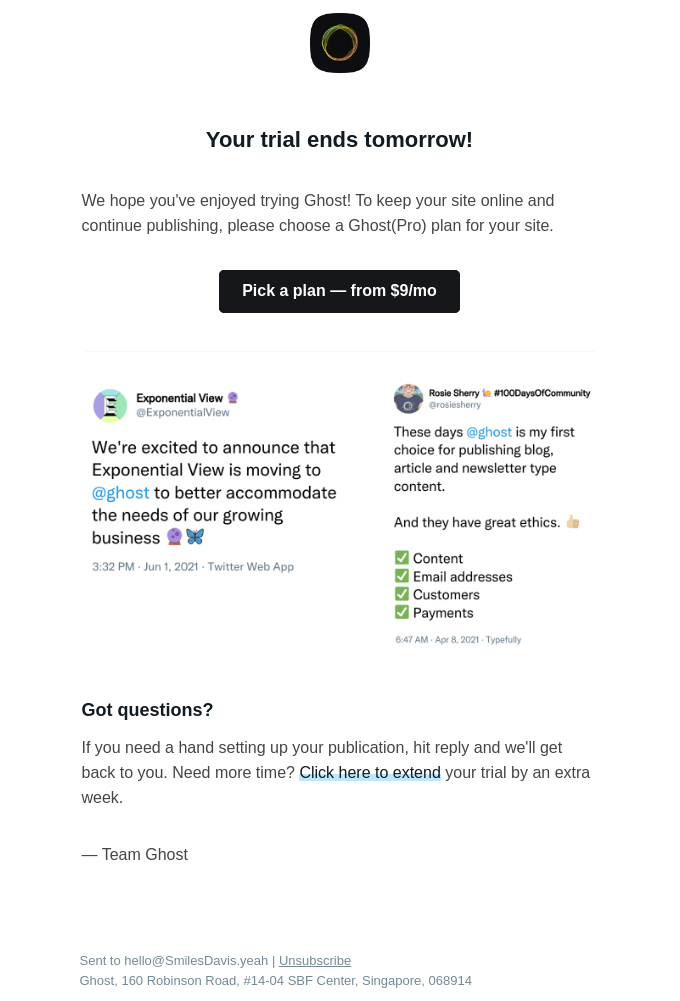
View the campaign on Really Good Emails
5. Upsell emails
The customer journey shouldn’t end after one purchase. Lifecycle email marketing campaigns are a great way to introduce customers to other options, especially if they’re personalized to the subscriber’s preferences.
Here’s a cool upsell email from Dollar Shave Club. It introduces a new service that encourages customers to shop for and order other personal care products in between their automated deliveries of shaving merchandise.
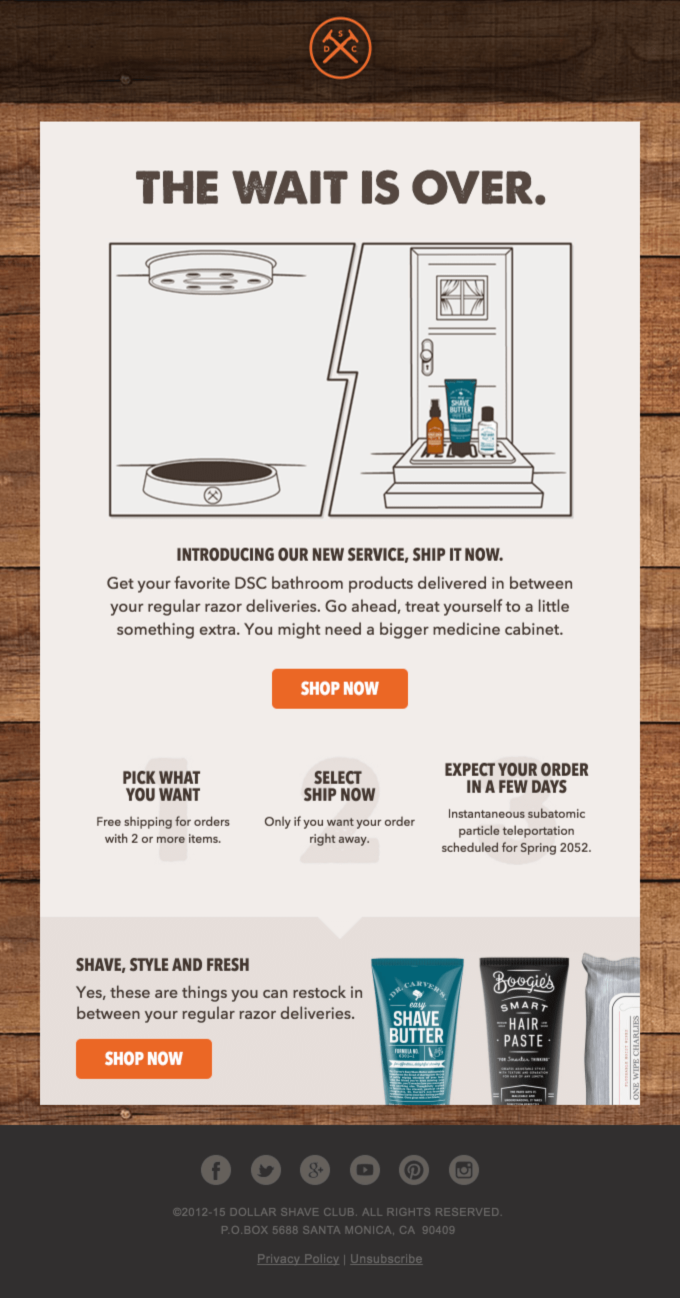
View the campaign on Really Good Emails
6. Renewal emails
When it comes to recurring payments, lifecycle email marketing campaigns are an excellent way to turn an average customer into a sticky customer. Not only does email work to remind subscribers to renew their plan or re-subscribe to a service, but it can also encourage them to automate that process.
That’s what Apple Music did in this eye-catching campaign. Notice how there’s a CTA button that prompts the customer to turn on automatic renewals. If that happens, the brand doesn’t have to push customers to renew, it just needs to notify them when it happens.

View this campaign on Really Good Emails
7. Referral program emails
The pinnacle of the customer lifecycle is convincing someone to become a brand advocate. As Chelsea explains, there’s nothing like getting your customers to spread the word for you.
“They’re satisfied customers and that’s great. But are they out there singing your praises? Are they a good reference? Word of mouth is still a very powerful marketing tool.”
Chelsea Mellonas, Sr. Manager of Lifecycle Marketing, Sinch Mailjet
One popular brand that’s received plenty of buzz (some good, some bad) is Peloton. Here’s a lifecycle email marketing campaign in which they provide a little monetary incentive so that current customers will help “grow their community.”

View the campaign on Really Good Emails
By the way, if you’re a Mailjet customer, be sure to check out our referral program.
8. Retention/win-back emails
Whether we like it or not, churn happens. Hopefully, lifecycle marketing efforts will help you retain customers. You can do that in a variety of ways, such as expressing gratitude for the customer, reminding them of the benefits, sending them VIP offers, or delivering personalized data that proves the value of the product.
Unfortunately, we’ll all lose customers occasionally. But hope is not lost. The win-back tactic is a lifecycle email marketing campaign designed to entice former customers back into your arms.
In this win-back email from Avocode, marketers told former customers about product improvements and offered a discount. It’s likely that Avocode got customer feedback, perhaps in the form of a survey, which told them reasons why customers left them in the first place.
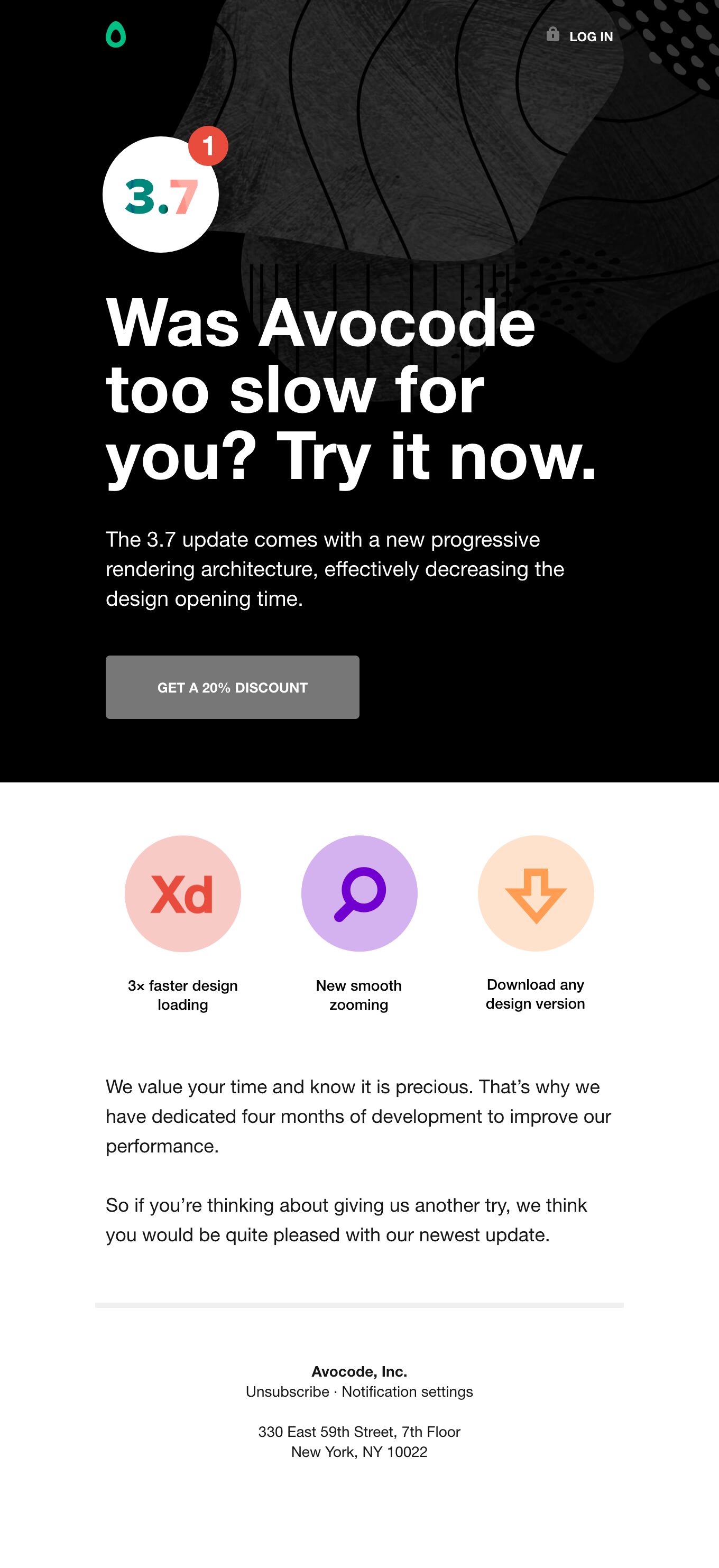
View the Campaign on Really Good Emails
Email’s advantages in lifecycle marketing
As you can see, inside the gears of a lifecycle marketing machine, email is a true linchpin. Without it, things could easily fall apart. And as Chelsea reminds us, email marketing can make an almost immediate impact, but it’s also easier on the budget than many other channels and tactics.
“I think email is one of the easiest most cost-effective channels for reaching your customers. For the lifecycle marketing programs I’ve run, email is kind of the base. There’s a lot of control there. You can control who gets what message and when they get it, for example.”
Chelsea Mellonas, Sr. Manager of Lifecycle Marketing, Sinch Mailjet
Here are some other benefits of making email the foundation of a lifecycle marketing strategy:
Segmentation and personalization: Marketers can customize the customer experience through email. That could mean choosing the right content for a certain persona, or subscriber segment. Email also offers the possibility of personalizing messaging and content for individuals.
Automation: From lead nurturing drip campaigns and transactional messages to behavior-based triggered emails, the inbox is an ideal place to deliver the right information at the right time.
Speed and agility: When you need to let customers know about something as soon as possible, email is one of the quickest and most reliable methods of communication.
Feedback: Email marketing can be a two-way conversation if you let it. It’s the perfect way to ask customers to participate in surveys or leave reviews.
Data and insights: Customer data is a big part of what drives lifecycle marketing. Email marketing data can be used to inform a lifecycle marketing strategy. However, all sorts of customer data can also be used to make email even more effective, especially when it comes to segmentation and personalization.
Omnichannel: Lifecycle marketing beyond email
Of course, email can’t do everything, and it isn’t always the best option for customer communication. If you’re relying solely on email to carry out a lifecycle marketing strategy, you could be missing out on a chance to connect with customers who’d rather use other channels.
“You want to reach customers with the right message wherever they are. That might be in their inbox, or it could be on social channels, somewhere else online, or even inside an application. I think SMS could have a really positive effect on the customer lifecycle. It’s really about reaching people in any way they prefer to consume information.”
Chelsea Mellonas, Sr. Manager of Lifecycle Marketing, Sinch Mailjet
When you adopt the sort of mindset that Chelsea is talking about, you’re moving towards an omnichannel customer communication strategy.
An omnichannel approach is the most effective way to move people through a customer journey. That’s because certain channels are better suited for certain types of messages and certain kinds of customers.
The need for omnichannel communication within a lifecycle marketing strategy becomes clear when you consider the story that a customer journey tells about your target personas.
Stories are powerful and the customer lifecycle is actually a reflection of the kinds of stories that are built into the collective human psyche. (Woah, things just got weird, right?)
We’re talking about a timeless storytelling framework known as “the hero’s journey.” It’s a pattern you’ll find in everything from ancient myths to Harry Potter and Star Wars. Even Simba from “The Lion King” goes on a hero’s journey. And when you apply the hero’s journey to customer communication, you make marketing magic.
Find out what we mean when you download our ebook on omnichannel communication.




